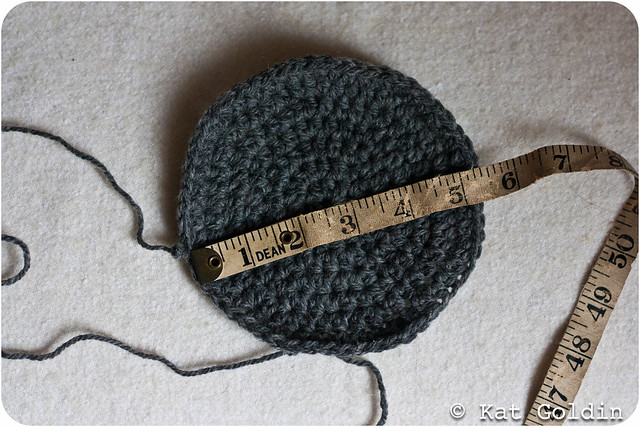-Метки
-Рубрики
- вязание (1723)
- игрушки (560)
- взрослым (382)
- детям (377)
- идеи (104)
- сумки (60)
- уроки (57)
- пледы (50)
- украшения (37)
- мои творения (30)
- журналы (14)
- шитье (751)
- игрушки (337)
- детям (100)
- идеи (78)
- взрослым (70)
- ремонт одежды (переделки) (50)
- уроки (26)
- сумки (18)
- печворк (17)
- мои творения (8)
- АВТОРА (2)
- творчество (415)
- рисунок (59)
- упаковка (40)
- необычное искусство (30)
- вторая жизнь (29)
- декупаж (19)
- кракелюр (4)
- мои творения (1)
- Все для детей (320)
- развитие (116)
- творим с детьми (80)
- english (19)
- творят дети (6)
- Общество (317)
- психология (83)
- братья наши меншие (78)
- города и страны (37)
- мода (27)
- самые-самые-самые (19)
- знаменитые (6)
- все для дома (239)
- для комнат (108)
- для кухни (64)
- интерьер (45)
- бисер (232)
- украшения (120)
- игрушки (23)
- уроки (20)
- мои творения (1)
- праздники (212)
- Новый год (128)
- Свадьба (26)
- День святого Валентина (19)
- Пасха (14)
- Halloween (8)
- 23 февраля (3)
- еда (161)
- сладкое (90)
- поделки из бумаги (157)
- объемное оригами (17)
- плетение из газет (16)
- квиллинг (14)
- папье-маше (9)
- идеи (1)
- красота и здоровье (141)
- все для игрушек (122)
- аксессуары (55)
- мебель (18)
- лепка (117)
- уроки (54)
- соленое тесто (28)
- скульптура (12)
- фотография (76)
- фотографы (18)
- уроки (10)
- вышивка (63)
- схемы (42)
- идеи (4)
- мои творения (2)
- Из моей жизни (59)
- дочка (13)
- мама (8)
- МАСТЕРА своего дела (47)
- ленты (47)
- вышивка (9)
- идеи (4)
- Юмор (40)
- валяние (38)
- уроки (17)
- валяные игрушки (9)
- АВТОРА (4)
- идеи (3)
- Спорт (34)
- художественная гимнастика (19)
- литература (27)
- поэзия (23)
- мое творчество (6)
- проза (1)
- photoshop (19)
- уроки (10)
- мои работы (2)
- рамки (1)
- Натуральные камни (0)
-Музыка
- OT VINTA - Jingle bells (Новорічний дзинь)
- Слушали: 3217 Комментарии: 5
-Фотоальбом

- мамулькины работы
- 01:55 10.07.2015
- Фотографий: 90

- вязаные игрушки
- 15:35 26.12.2012
- Фотографий: 89

- разное вязаное
- 22:57 21.12.2012
- Фотографий: 46
-Поиск по дневнику
-Подписка по e-mail
-Статистика
How To Design Your Own Hat. English. |
How To Design Your Own Hat (Part 1: The Basic Principles)
One of the main reasons I started designing my own hats was because I struggled to find crochet patterns that didn't look like those crocheted Barbie toilet paper covers my grandmother had.
When I first started, it was complete guess work. I didn't know about even increases or flat circles and crocheted everything in a UK Treble/US Double crochet. Patterns evaded me (and still do to some extent). I would always lose count of stitches and never knew where the designer intended for me to put my hook. My hats looked more like something out of the hyperbolic reef project, rather than a garment.
About 3 years and countless hats later, I feel relatively confident in my ability to make a hat to fit a head. But even now, I remain baffled by the lack of readily available information on how to design your own. These type of instructions are much more prevelant in the knitting community, Elizabeth Zimmerman being the classic example. It was reading her Knitters Almanac that really taught me how to design.
To save others the frustration I have gone through I thought it would be useful to lay out my process for designing a very basic beanie style hat.
To keep things simple, I am laying out the posts over a couple of days. Today, I will just give an overview of the general principles and then tomorrow, we will look a the nuts and bolts of hat design.
Beanies are generally the easiest of hats as it follows a very simple pattern:
- increases are worked over a flat circle to the desired diameter and then,
- the increases stop and the hat height is built up using rounds of the same number of stitches as the last increased row, or "worked even".
Have I lost you? Let me explain.
Remember geometry class and those endless problems involving pi? Well, contrary to what I told my math teacher about geometry being useless in 'real life', it actually comes in handy when making a hat.
Very often, you will know (at least roughly) the circumference of your recipients head. Even if you haven't measured, there are a variety of guides that give you the basic size range for head sizes. Hat sizes are about 1-2 inches smaller than the head size and have heights that correspond to circumference. No matter where you look, they are pretty standard. My hats are generally sized as follows:
|
Age |
Head Size |
Hat Size |
Hat Height |
Flat Circle Diameter |
|
0-6 months |
13 - 15in |
12 -14 inches |
4.5 - 5 inches |
4 inches |
|
6-12 months |
16 - 19 inches |
14 – 18 inches |
5.5 inches |
4.5 inches |
|
1 – 3 Years |
18 - 21 inches |
17 – 20 inches |
6.5 inches |
5.5 inches |
|
4+ years |
20 – 22 inches |
19 – 21 inches |
7.5 inches |
6 inches |
|
Women |
22 inches |
20 inches |
8.5 inches |
6.5 inches |
|
Men |
23 inches |
21 inches |
9.5 inches |
7.25 inches |
The range of measurements in sizes is usually covered by making a hat to the smallest size in an age range, quite simply because hats stretch, some more than others. Materials like wool are stretchier than cotton and certain stitches stretch more as well. I like UK Half Treble/US Half Double Crochet for most hats as it is a good balance between creating a nice solid material, with a nice stretch in it. Longer stitches, such as UK Treble/US Double, and shell stitch have a lot of stretch. UK Double/US Single crochet is pretty tight, but does create a lovely, even fabric.
But really, the type of stitch you use is largely irrelevant. You need to use that stitch to increase steadily in a flat circle, until its diameter will give you a hat of the correct circumference. How do you know? Well, its that good ol' geometric equation where
Diameter (the distance across the circle) = Circumference (the distance around the circle)/pi
You'll see in the table above that I have calculated the diameters of the flat circles for most hat sizes. However, if you know the head size you are making for, you need to:
- Subtract 1.5 inches from the head circumference to get the hat size
- Divide the hat size by 3.14
The resulting figure is the diameter. Once you get your flat circle measuring something akin to the correct diameter, stop increasing and just crochet in the round until your hat is the right height. You can always use a balloon blown up to the right head size to check your sizing if the recipient isn't readily willing and/or available (also balloons are great for blocking beanies.)
So the next question is "How do I know how many rounds and how many stitches to work to for my increases?" That, my friends, is a question for another day.
***Part 2 is available here***
| Рубрики: | вязание/детям |
Процитировано 2 раз
| Комментировать | « Пред. запись — К дневнику — След. запись » | Страницы: [1] [Новые] |










